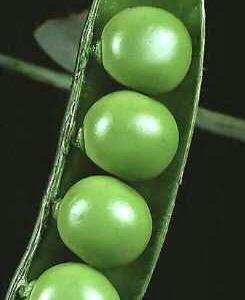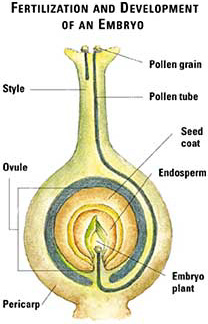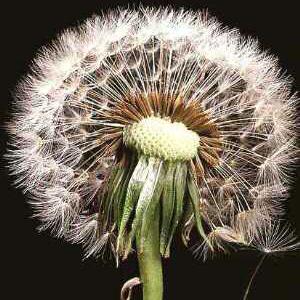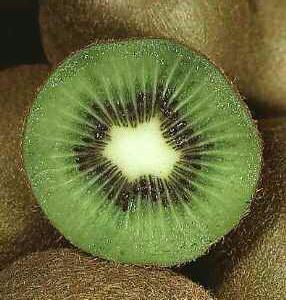 |
Fertilization also starts off other changes. A seed coat forms around the developing embryo and endosperm, creating the seed. Around the seed, the ovary wall forms a layer called the pericarp, which in most species develops into the fruit. When the seed is mature and ready for dispersal or spreading around, the fruit may be fleshy and soft, as in the case of peaches or plums; or it may be dry, like an acorn or dried pea pod.
This pea pod is still soft, and at the stage that we pick the "seeds" to eat as peas. If it was left on the plant for longer, it would dry out, and then the seeds would be mature and ready to be spread around to start growing new plants. |
Fertilization, the process leading
to the production of seeds and fruits, occurs after the
pollen has been put on to the stigma of a flower. A pollen
grain contains two cells. One of these germinates and
develops into the pollen tube, a structure that quickly
grows through the style and enters an ovule.
The other pollen cell divides into
two sperm, which move through the pollen tube. One
sperm fertilizes the egg in the ovule; the other unites with
another cell in the ovule and develops into the
endosperm, the food supply which will provide food
for the developing embryo and, in some plants, the
germinating seedling as well. The role of a fruit is to protect
the seed until maturity; it often helps to spread seeds, as
well. For example, the fruits of a maple tree have winglike
structures that help them spin through the air. The fruits
of a dandelion have a tiny parachute that disperses the seed
on the wind. And of course, birds and animals eat many
fruits (fleshy and otherwise), scattering the seeds far and
wide. This gives the plant a good chance of having lots more
offspring survive.

 . . . . . . . . . . . . . . . . . . .
. . . . . . . . . . . . . . . . . . .
